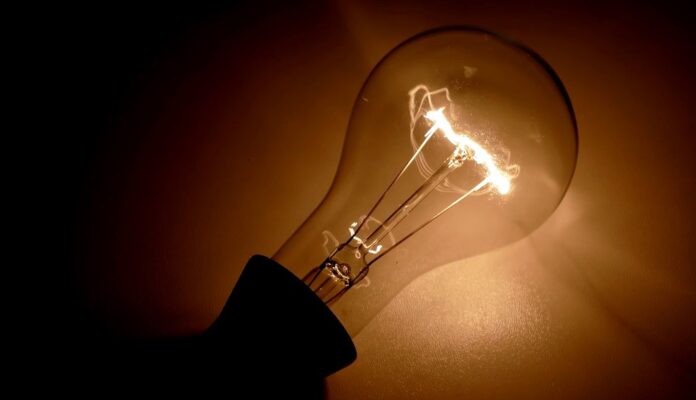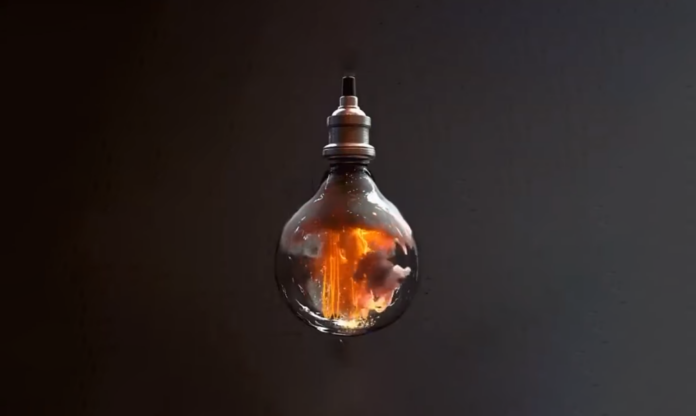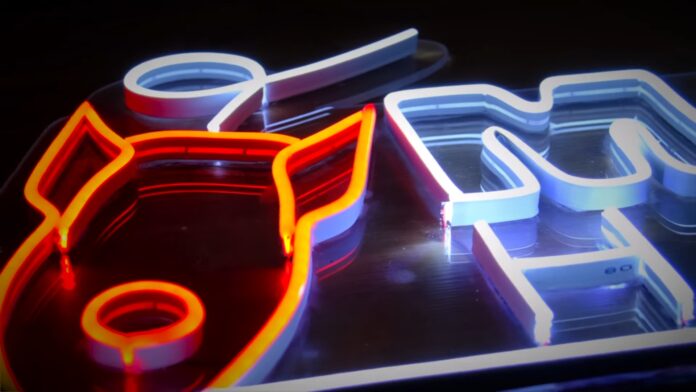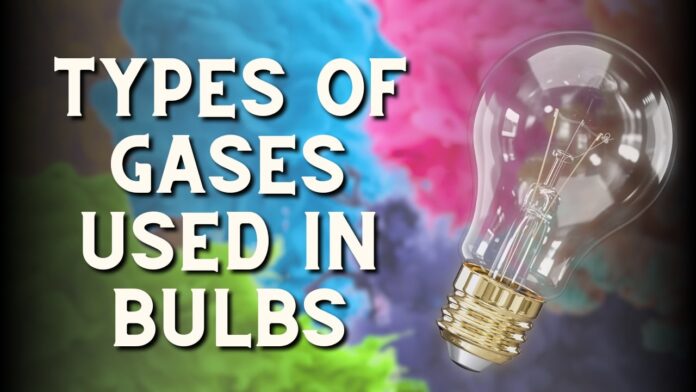Imagine a world devoid of light after sunset, where nights are painted in thick, inky shadows. Fortunately, the innovation of light bulbs has illuminated our lives quite literally. These seemingly simple devices hide a complex world within, largely powered by various gases.
This article will dive deep into the role of gases in lighting technology, breaking down the science behind gas-filled bulbs and discussing the different types of gases used in various bulb technologies.
The Role of Gases in Light Bulbs

Light bulbs come in all shapes and sizes, but at their core, they operate through a simple principle: When a material is heated or subjected to an electric current, it emits light.
Gases play a crucial role in this process by influencing the color, brightness, and efficiency of the light emitted. Different gases result in different lighting characteristics, offering a wide range of options for diverse applications.
Gases in light bulbs serve a multitude of purposes. They facilitate the movement of electric current, regulate the light’s color and intensity, and protect the filament from oxidation.
The choice of gas can dramatically impact a bulb’s lifespan, energy efficiency, and light quality. Moreover, gases like neon, krypton, and xenon give the bulbs unique properties, making them ideal for specific uses.
Understanding the role of gases in light bulbs requires a journey into the past to explore the evolution of lighting technology. This journey highlights the significance of gases in shaping our ability to harness light, demonstrating their vital function in this cornerstone of modern life.
The Evolution of Lighting Technology
Since the inception of the incandescent bulb by Sir Hiram Maxim and, later, Thomas Edison in the late 19th century, lighting technology has been in constant evolution.
The first bulbs were vacuum-filled due to the lack of knowledge about the role of gases in light emission. However, as the understanding of lighting technology evolved, so did the incorporation of various gases to enhance bulb efficiency and longevity.
Fluorescent lighting technology, introduced in the 1930s, marked the next significant milestone in lighting evolution. These lamps, filled with low-pressure mercury vapor, emitted ultraviolet light that was converted into visible light by a phosphor coating.
Fluorescent lights were more energy-efficient than their incandescent counterparts, marking an important shift toward sustainability in lighting technology.
The late 20th and early 21st centuries witnessed further advancements in gas-based lighting technologies with the introduction of neon, xenon, and krypton gas bulbs.
Each of these technologies offered unique benefits, from vibrant colors in neon lights to high-efficiency lighting in xenon and krypton gas bulbs. This historical journey underscores the increasingly critical role of gases in lighting technology.
Understanding the Science: How Gas-Filled Bulbs Work

The science behind gas-filled bulbs is fascinating and multi-faceted. When an electric current is applied, it energizes the gas atoms, causing them to emit light. The type of gas used in the bulb influences the color and brightness of this emitted light. This fundamental principle underlies the operation of all gas-filled light bulbs.
For instance, in fluorescent lights, the current causes the mercury vapor to emit ultraviolet (UV) light. This UV light excites the phosphor coating inside the bulb, which then emits visible light. In neon bulbs, the excited neon gas itself emits light, producing the iconic red glow we associate with neon signs.
Understanding the science behind gas-filled bulbs gives us a window into the complex world of lighting technologies. This knowledge informs the development of new, more efficient, and innovative lighting solutions and paves the way for a more sustainable and brighter future.
Understanding the different types of gases used in bulbs is crucial, but if you’re looking for a unique way to illuminate your space, consider exploring some innovative ideas, such as lighting under your bed, which can truly transform and cozy up your room.
These are 5 types of gas used in light bulbs:
1. In the Limelight: Argon Gas in Incandescent Bulbs

One of the most common gases used in light bulbs is argon. It’s the primary gas used in incandescent bulbs, the type of bulb most of us are familiar with from our homes. Argon is a noble gas, which means it is chemically stable and non-reactive. These properties make it ideal for protecting the tungsten filament from degradation due to oxidation.
When an electric current is passed through the filament in an argon-filled incandescent bulb, the filament heats up and emits light. The argon gas helps to diffuse this light and prolong the life of the filament by reducing its evaporation. In this way, argon gas is a vital component in the performance and longevity of incandescent bulbs.
Despite its widespread use in incandescent bulbs, argon has its drawbacks. Incandescent bulbs are notorious for their low energy efficiency, as the majority of the electric energy is lost as heat rather than converted to light. The search for more efficient gases has led to the development of alternative lighting technologies.
2. Mercury Vapor: The Backbone of Fluorescent Lighting

Mercury vapor forms the backbone of fluorescent lighting. When an electric current is passed through mercury vapor in a fluorescent bulb, it emits ultraviolet light. This UV light strikes a phosphor coating on the inside of the bulb, causing it to glow and produce visible light. The resulting light is much more energy-efficient than that produced by incandescent bulbs.
The introduction of mercury vapor in fluorescent bulbs marked a significant leap in energy efficiency in lighting. This technology paved the way for the development of compact fluorescent bulbs (CFLs), which offer the energy efficiency of fluorescent lighting in a more compact form factor suitable for residential use.
Despite its benefits, mercury is a toxic substance, posing potential environmental and health risks. Proper handling and disposal of fluorescent bulbs are critical to mitigate these risks. While fluorescent bulbs remain popular, these concerns have spurred the development of even more efficient and environmentally friendly lighting technologies.
3. Neon Gas: Bringing Color

Neon lights have added color and vibrancy to our cityscapes for over a century. These lights operate by passing an electric current through low-pressure neon gas, causing it to emit a bright red glow. By using different gases or coatings, neon lights can be made to glow in a rainbow of colors.
The vibrant colors and flexibility of neon lights have made them a popular choice for advertising signs and art installations. They offer a unique blend of functionality and aesthetics, creating eye-catching displays that stand out in the urban landscape.
Despite their popularity, neon lights are not commonly used for general illumination due to their lower energy efficiency compared to other gas-filled bulbs. They also require high voltages to operate, which can pose safety risks. Nonetheless, the unique aesthetic of neon lights ensures their continued popularity in specific applications.
4. Xenon Gas in High-Intensity Discharge (HID) Lamps

Xenon gas is a key player in high-intensity discharge (HID) lamps, often used in automotive headlights, outdoor area lighting, and projector lamps. Xenon gas bulbs work by creating an arc of electricity between two electrodes. This arc excites the xenon gas, causing it to emit a bright, white light that’s much more intense than most other types of bulbs.
Xenon bulbs offer several advantages. They produce a light that closely mimics natural daylight, enhancing visibility and reducing eye strain. They are also more energy-efficient than incandescent and halogen bulbs, making them a popular choice for applications that require high-intensity light.
However, xenon bulbs have a higher initial cost and require specific ballast to operate, which can be a deterrent for some consumers. Despite these drawbacks, the exceptional brightness and energy efficiency of xenon bulbs makes them a compelling choice for many applications.
5. Krypton Gas: A High-End Alternative in Lighting

Krypton gas is another noble gas used in lighting, often considered a high-end alternative. Krypton-filled bulbs produce a bright, white light that’s more energy-efficient than incandescent bulbs. This efficiency comes from the high thermal conductivity of krypton gas, which allows the filament to burn hotter and brighter.
Krypton gas is primarily used in specialty lighting applications, such as in high-end flashlights and photography lighting, where its bright, white light is highly valued. It’s also found in some energy-saving incandescent bulbs, where it helps to increase efficiency and lifespan compared to traditional incandescent bulbs.
Despite its benefits, krypton gas is more expensive than other gases used in bulbs, due to its rarity and the cost of refining it. This higher cost limits its widespread use in common household bulbs but does not detract from its value in high-end and specialty lighting applications.
Energy-Efficient and Environmentally-Friendly Gas Choices
As global awareness of environmental sustainability grows, the lighting industry is focusing on developing energy-efficient and environmentally friendly gas choices. LEDs (Light Emitting Diodes), though not gas-based, are leading this green initiative with their exceptional energy efficiency and long lifespan. However, gases still have a role to play in sustainable lighting.
For instance, some manufacturers are exploring the use of xenon and krypton gases in energy-efficient incandescent bulbs. These gases allow the filament to burn hotter and brighter, improving efficiency and lifespan. Additionally, advancements in phosphor technology are improving the efficiency of mercury vapor fluorescent bulbs, reducing the amount of mercury required.
These efforts reflect the lighting industry’s commitment to sustainability and demonstrate the potential of gases in creating more efficient and environmentally friendly lighting solutions.
Safety Considerations

While gas-filled bulbs have revolutionized lighting, they also come with certain safety considerations. It’s essential to handle these bulbs responsibly to ensure safe usage and disposal. For example, mercury in fluorescent bulbs is a hazardous substance that requires careful handling and disposal to prevent environmental contamination.
On the other hand, neon lights operate at high voltages, which can pose a risk of electric shock. Therefore, they should be handled with care and installed by professionals. Xenon and krypton gas bulbs can operate at high temperatures and should be allowed to cool before handling.
These safety considerations underscore the importance of understanding the properties and risks associated with different gases used in bulbs. Responsible handling and disposal of gas-filled bulbs can mitigate these risks and ensure the safe and effective use of these lighting technologies.
Future Outlook: Emerging Gas Technologies in Lighting
The future of gas technologies in lighting looks bright, with ongoing research and development paving the way for new and improved lighting solutions. One exciting area of research is the use of novel gases and gas mixtures in bulbs to enhance light output and energy efficiency.
For example, researchers are exploring the potential of helium and other rare gases in lighting. Similarly, advancements in phosphor technology could further enhance the efficiency and brightness of fluorescent bulbs, reducing their environmental impact.
Moreover, innovations in LED technology continue to push the boundaries of lighting safety and efficiency, potentially opening up new applications for gas-based lighting. As we move forward, the interplay of gases, materials, and technology promises to keep lighting a dynamic and exciting field.
Closing Thoughts
From the gentle glow of the incandescent bulb to the vibrant neon signs and the brilliant xenon headlights, gases play a critical role in lighting our world. They shape the color, brightness, and efficiency of our lights and continue to enable new and innovative lighting solutions.
While the types of gases used in bulbs have evolved over the years, the essence remains the same: harnessing the properties of gases to convert electricity into light. As we look to the future, the continued exploration and understanding of gases promise to keep lighting our path forward, one bulb at a time.




